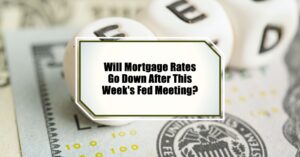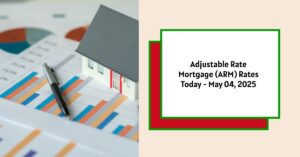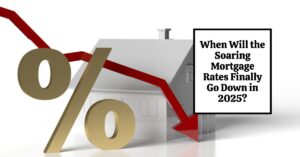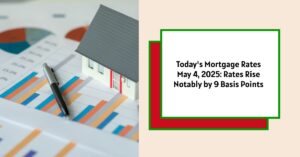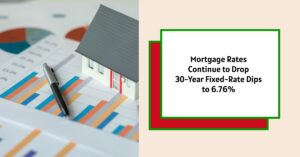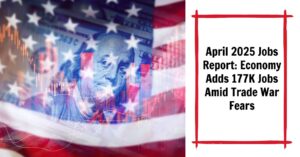Are you glued to the financial news, wondering what this week's Fed meeting will mean for your mortgage? You're not alone! Everyone from first-time homebuyers to seasoned real estate investors is waiting with bated breath. So, will mortgage rates go down after this week's Fed meeting? The short answer is: probably not immediately, but keep a close eye on what the Fed Chairman says. While a surprise is always possible, most signs point to the Fed holding steady for now. However, the real key is in the tone of the meeting and any hints about future moves.
Will Mortgage Rates Drop After This Week's Fed Meeting?
Decoding the Fed: Why This Meeting Matters
The Federal Reserve (or “the Fed,” as it's commonly known) plays a huge role in shaping the economic climate. It acts as the central bank of the United States, and one of its primary tools is setting the federal funds rate. This rate influences what banks charge each other for overnight lending, which in turn affects interest rates on all sorts of things, including:
- Credit cards
- Personal loans
- Mortgages
The Fed’s decisions are based on its dual mandate: to promote maximum employment and stable prices (keeping inflation in check). When inflation is high, the Fed tends to raise interest rates to cool down the economy. When the economy is sluggish, they might lower rates to encourage borrowing and spending.
The Recent Rate Hike Pause
Remember those rate hikes we saw throughout 2023? The Fed implemented them to combat rising inflation. Then, thankfully, they eased up a bit by cutting rates three times in late 2024, giving us a full percentage point drop. But so far in 2025, they've held steady. This pause leaves many of us wondering, “What's next?”
Why a Rate Cut This Week is Unlikely
As of right now, most analysts and market indicators suggest the Fed will likely hold the federal funds rate steady at its current range of 4.25% to 4.50%. For instance, the CME Group's FedWatch tool, a respected gauge of market expectations, currently shows only a slim chance of a rate cut at this week's meeting. As of May 5, the CME Group's FedWatch tool had a rate cut projected at just a 1.8% likelihood. So it's safe to expect the federal funds rate to stay put at the current range between 4.25% and 4.50%.
Here’s why:
- The Fed Wants More Data: They want to see more consistent evidence that inflation is truly under control before they start cutting rates again.
- Avoiding a Premature Move: The Fed is wary of cutting rates too soon, which could potentially reignite inflationary pressures.
The Powell Factor: What to Listen For
The most crucial part of the week is not necessarily the rate decision itself, but rather the press conference given by Federal Reserve Chairman Jerome Powell after the meeting. This is where the real clues about the future lie.
Here's what to pay attention to:
- Language: Does Powell sound optimistic or cautious about the economy? Are they emphasizing progress on inflation, or expressing concerns about economic slowdown?
- Forward Guidance: Will he hint at potential rate cuts in the future, particularly at the June meeting? If he does, even vaguely, it could influence mortgage rates.
Why does this matter? Because lenders don't need to wait for the Fed to actually cut rates to start adjusting their own mortgage offers. They often anticipate future moves and adjust their rates accordingly.
What This Means for Mortgage Rates
If the Fed holds rates steady and Powell doesn't give strong signals of an imminent rate cut, I expect mortgage rates will likely remain fairly stable in the short term. However, even subtle hints about future cuts could cause a slight dip.
Here’s the thing: Mortgage rates aren't solely determined by the federal funds rate. Other factors play a significant role, including:
- The 10-Year Treasury Yield: This is a benchmark for long-term interest rates and is a major influence on mortgage rates.
- Investor Sentiment: Economic news and market jitters can impact investor confidence, which in turn affects rates.
- Overall Economic Outlook: A strong economy usually leads to higher rates, while a weaker economy can push them down.
Looking Ahead: The June Meeting and Beyond
The June meeting is shaping up to be a potentially pivotal moment. Currently, market expectations for a rate cut in June are higher than for this week's meeting, hovering around 30%. If inflation continues to cool and the economic data supports it, the Fed might be more inclined to take action then.
Read More:
Will Mortgage Rates Go Down in May 2025: Expert Forecast
Mortgage Rates Predictions This Week – May 1-7, 2025: Will Rates Drop?
When Will Mortgage Rates Go Down from Current Highs in 2025?
What You Can Do Now to Secure a Good Mortgage Rate
Even if rates don't drop immediately, you can still take steps to improve your chances of getting a favorable mortgage rate. Here's my advice:
- Check Your Credit Score: This is crucial. A higher credit score translates to lower interest rates. Review your credit report for any errors and work to improve your score if needed.
- Shop Around: Don't settle for the first offer you get. Compare rates from at least three different lenders. Online lenders, credit unions, and local banks can all offer different terms.
- Consider Different Loan Types: Explore options like fixed-rate mortgages (FRMs) and adjustable-rate mortgages (ARMs). An ARM might offer a lower initial rate, but be aware that it can adjust over time.
- Increase Your Down Payment: A larger down payment can lower your loan-to-value ratio (LTV), which can also lead to a better interest rate.
- Keep an Eye on the Market: Mortgage rates can fluctuate daily, so stay informed about economic news and market trends.
Here's a quick table summarizing these tips:
| Strategy | Benefit |
|---|---|
| Improve Credit Score | Lower interest rates, better loan terms |
| Shop Around | Find the most competitive rates and terms |
| Explore Loan Types | Choose a loan that fits your risk tolerance and financial goals |
| Increase Down Payment | Lower LTV, potentially better interest rate |
| Monitor Market Conditions | Identify opportunities to lock in a favorable rate |
A Word of Caution About Timing the Market
It's tempting to try and time the market perfectly and wait for the absolute lowest mortgage rate. However, this can be a risky game. Waiting too long could mean missing out on a home you love or delaying your financial goals.
My advice is to focus on what you can control: your credit score, your down payment, and your lender options. If you find a rate that you're comfortable with, don't hesitate to lock it in.
The Bottom Line
- While an immediate drop in mortgage rates after this week's Fed meeting is unlikely, it's not impossible.
- Pay close attention to Chairman Powell's press conference for hints about future rate cuts.
- Focus on improving your financial situation and shop around for the best mortgage rate you can find.
- Don't get too caught up in trying to time the market perfectly.
Ultimately, buying a home is a personal decision. Make sure you're financially prepared and comfortable with the terms of your mortgage.
Turnkey Real Estate Investment With Norada
Investing in real estate can help you secure consistent returns with fluctuating mortgage rates.
Despite softer demand, smart investors are locking in properties now while competition is lower and rental returns remain strong.
HOT NEW LISTINGS JUST ADDED!
Speak with an investment counselor (No Obligation):
(800) 611-3060
Also Read:
- Will Mortgage Rates Go Down in 2025: Morgan Stanley's Forecast
- Expect High Mortgage Rates Until 2026: Fannie Mae's 2-Year Forecast
- Mortgage Rate Predictions 2025 from 4 Leading Housing Experts
- Mortgage Rates Forecast for the Next 3 Years: 2025 to 2027
- 30-Year Mortgage Rate Forecast for the Next 5 Years
- 15-Year Mortgage Rate Forecast for the Next 5 Years
- Why Are Mortgage Rates Going Up in 2025: Will Rates Drop?
- Why Are Mortgage Rates So High and Predictions for 2025
- Will Mortgage Rates Ever Be 3% Again in the Future?
- Mortgage Rates Predictions for Next 2 Years
- Mortgage Rate Predictions for Next 5 Years
- Mortgage Rate Predictions: Why 2% and 3% Rates are Out of Reach
- How Lower Mortgage Rates Can Save You Thousands?
- How to Get a Low Mortgage Interest Rate?
- Will Mortgage Rates Ever Be 4% Again?
